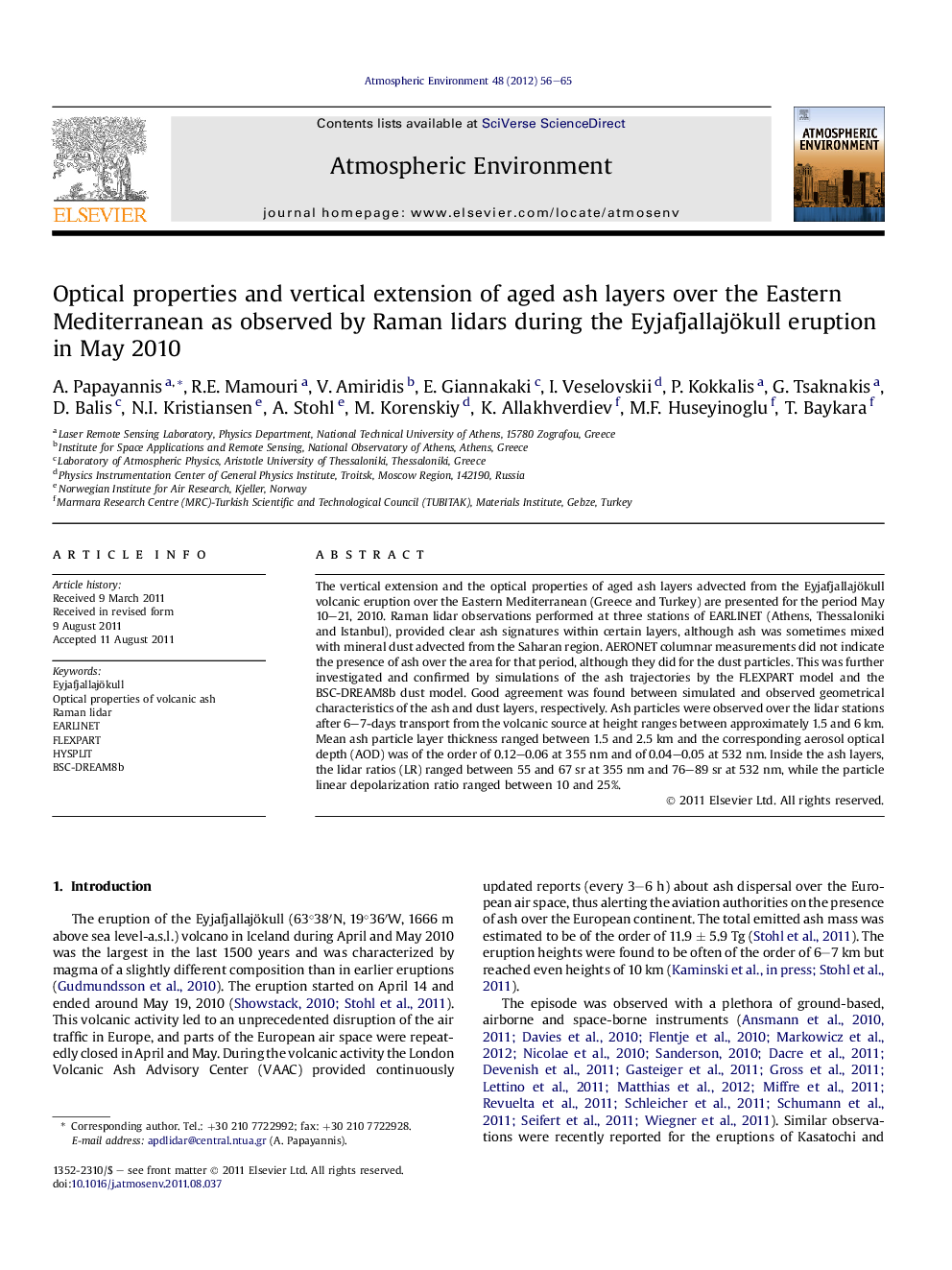| Article ID | Journal | Published Year | Pages | File Type |
|---|---|---|---|---|
| 4439114 | Atmospheric Environment | 2012 | 10 Pages |
The vertical extension and the optical properties of aged ash layers advected from the Eyjafjallajökull volcanic eruption over the Eastern Mediterranean (Greece and Turkey) are presented for the period May 10–21, 2010. Raman lidar observations performed at three stations of EARLINET (Athens, Thessaloniki and Istanbul), provided clear ash signatures within certain layers, although ash was sometimes mixed with mineral dust advected from the Saharan region. AERONET columnar measurements did not indicate the presence of ash over the area for that period, although they did for the dust particles. This was further investigated and confirmed by simulations of the ash trajectories by the FLEXPART model and the BSC-DREAM8b dust model. Good agreement was found between simulated and observed geometrical characteristics of the ash and dust layers, respectively. Ash particles were observed over the lidar stations after 6–7-days transport from the volcanic source at height ranges between approximately 1.5 and 6 km. Mean ash particle layer thickness ranged between 1.5 and 2.5 km and the corresponding aerosol optical depth (AOD) was of the order of 0.12–0.06 at 355 nm and of 0.04–0.05 at 532 nm. Inside the ash layers, the lidar ratios (LR) ranged between 55 and 67 sr at 355 nm and 76–89 sr at 532 nm, while the particle linear depolarization ratio ranged between 10 and 25%.
► We show coordinated EARLINET aerosol lidar measurements in the Eastern Mediterranean. ► Data were obtained during the Eyjafjallajökull eruption on May 2010. ► We compare model results and lidar/sunphotometer measurements. ► We focus on optical properties/vertical extension of the observed aged ash layers.
